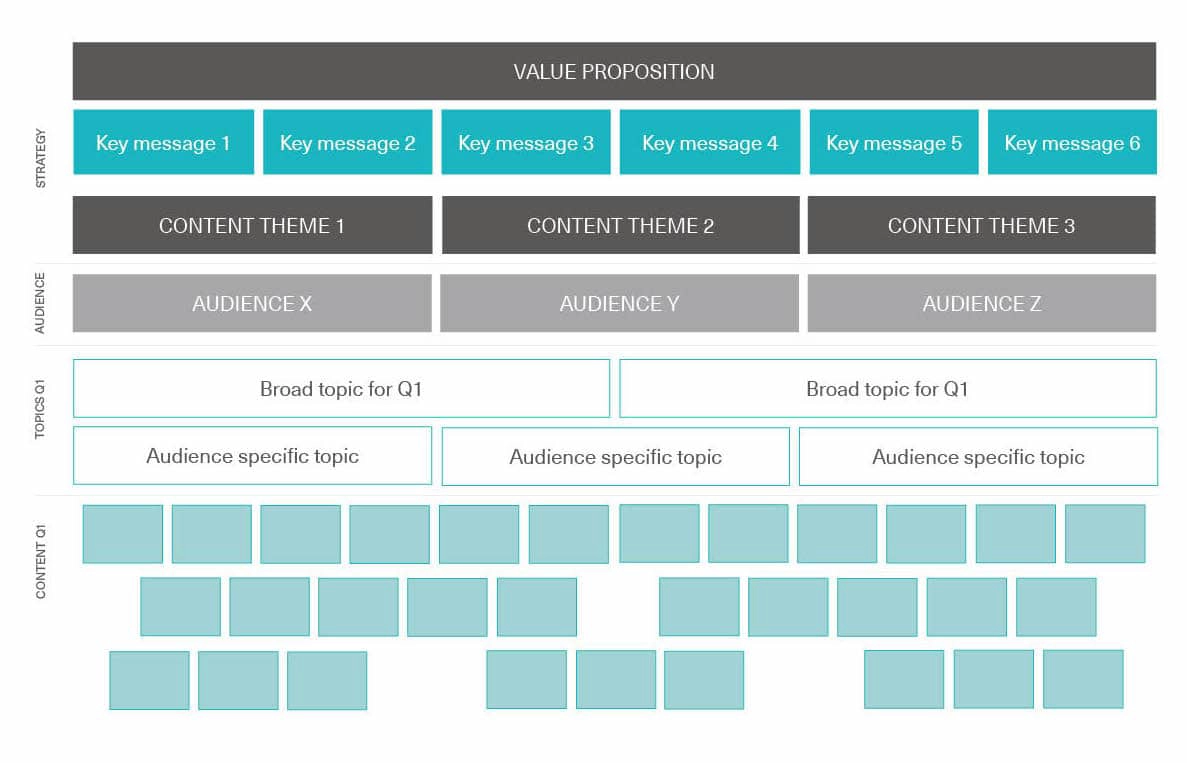Let’s face it, businesses always need new enquiries and content marketing is now recognised as the long-term strategy to increase them. In the last 5-years content marketing has become the way to build a stronger connection with your audience. You can educate them and build trust by feeding them with the information they need to make a decision. Content marketing is also a vital strategy for reaching audiences through organic search. You haven’t got an effective SEO strategy if you don’t have useful, usable content that targets the keywords your audience are searching for.
Businesses who have a strong content marketing strategy stand out from the competition. They are part of the conversations their target audience cares about, they appear knowledgeable on hot industry topics and are easily recognisable within their sector. They engage with their audience on an emotional level and encourage their loyalty with persuasive content that helps them become trusted industry experts. What’s not to like?
However, B2B content marketing is seen as a time-consuming task with many brands not giving it the time or effort it deserves. It also requires proper planning up front to ensure the content themes chosen are relevant to the target audience, and the workflow is in place to consistently produce and distribute quality content.
Fear not, we have designed this step-by-step guide to get you from content zero to content hero!
Firstly, what is content marketing?
The Content Marketing Institute defines content marketing as:
“… a strategic marketing approach focused on creating and distributing valuable, relevant, and consistent content to attract and retain a clearly defined audience — and, ultimately, to drive profitable customer action.“
An effective content marketing strategy is not about selling your products and services. It’s about building trust with your buyers by demonstrating your knowledge and expertise. By informing and helping your audience at various stages in their decision making journey, it is hoped that when the time comes to buy, they will choose you over the competition. In addition, as search algorithms get increasingly more sophisticated, your content will be penalised if it’s not written to be useful to the user (no more keyword stuffing!) and your website delivers a poor experience (visitors can’t find what they are looking for). Therefore content marketing is also intrinsically linked to SEO and should be treated as such. We’ll talk more about this later on.
Why is it important for your business?
Promote expertise
Great content marketing establishes your brand as an industry expert and ensures your brand gets seen and heard by your target audience. It allows your company to be part of the conversation and become synonymous with the topics your audience cares about, such as sustainability or supply chain issues within your sector.
Nurture prospects
Nurture marketing is educating your audience through a series of content marketing activities, designed to target them at each stage in the buyer’s journey. Through different types of content, from guides and whitepapers to check lists and testimonials, you can attract new visitors to your website, help them shortlist/ consider your services and ultimately help them convert.
Build trust
The content on your website should be as reassuring as your best salesperson. It should be engaging, informative, address possible objections – but not be too pushy. The more your audience engages with your brand, in a positive and constructive way, the more trust they will build with you. They will come to you for advice and guidance and rely on you as a source of industry expertise. But trust doesn’t come instantaneously, it is developed over time and guess what takes time – content marketing.
As well as new business, content marketing affects your existing customer base. Content marketing helps strengthen your relationship with your customers and, in effect, customer retention. We’ve all heard it’s easier to keep a customer than acquire a new one. Content marketing will help with attrition by consistently communicating a positive brand message… that you are the best in the business of course!
Support SEO
Search Engine Optimisation (SEO) helps your website perform better in the search engine results pages (SERPs). The search engine (Google, Bing etc) crawls your website’s content in order to determine the usefulness and relevance of your website to the users search term. There are now many factors involved in ranking well, it’s not just about keywords. The readability, quality and depth of the content, the useability of the website and whether or not your audience find what they are looking for on your site (onward journey and conversion) all have a part to play.
Well written, well paced (layout) content designed to effectively meet the search intent of the user and support onward journeys of discovery, will perform well in search. Content marketing and SEO are therefore intrinsically linked, you can’t have one without the other. To rank highly in the SERPs, It’s important to design a content marketing strategy that is grounded in the search intent of your target market.




